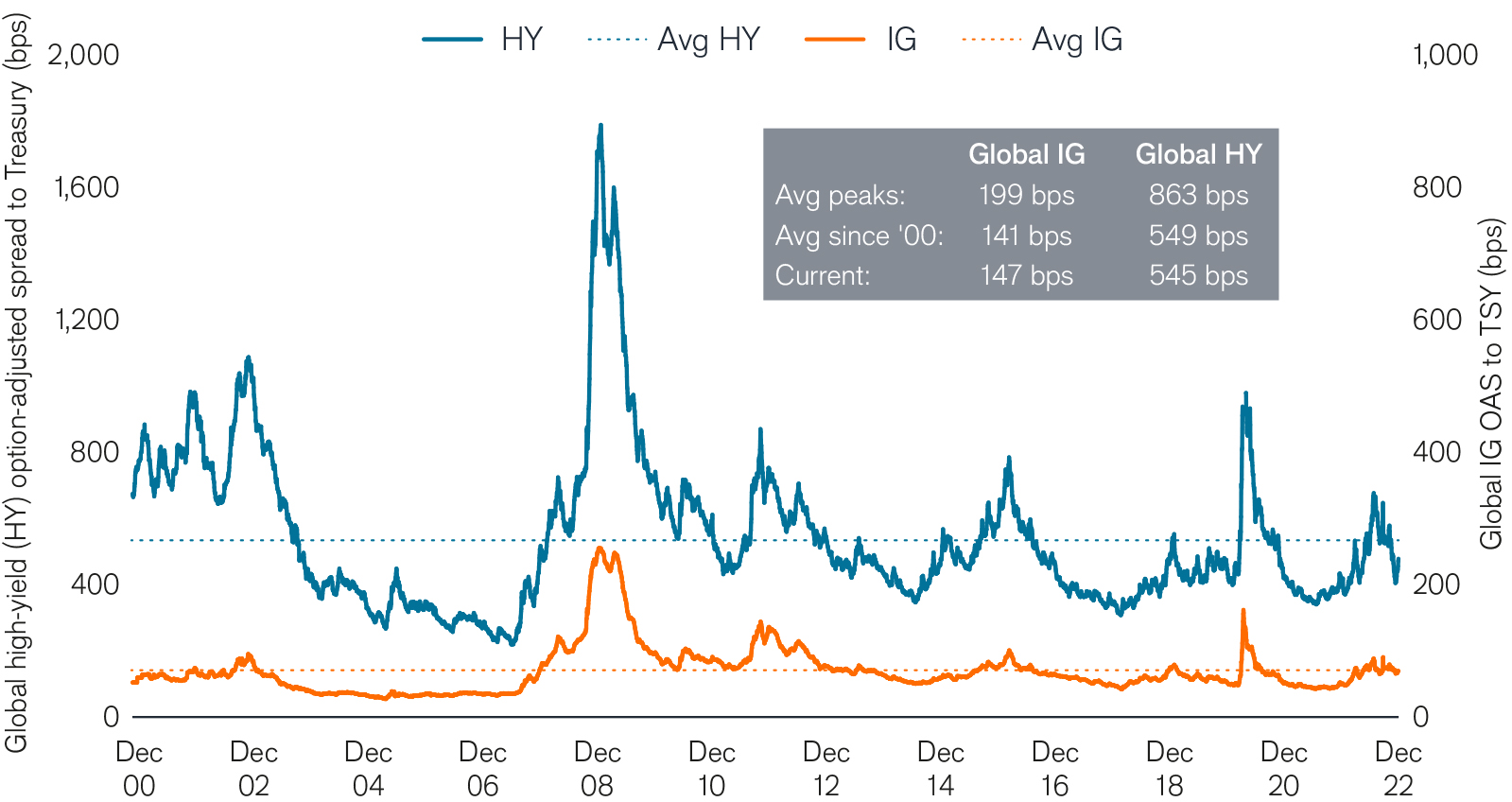Subscribe
Sign up for timely perspectives delivered to your inbox.
With the outlook for equities uncertain and a slowing growth environment looming, the Portfolio Construction and Strategy Team explains why certain trends may prove to be supportive for both investment-grade and high-yield credit in 2023.

This article is part of the latest Trends and Opportunities report, which outlines key themes for the next stage of this market cycle and their nuanced implications across global asset classes.
Even during a slowdown, credit remains attractive since high current yields and interest rate sensitivity can counterbalance – or possibly exceed – potential losses from spread widening.

Source: Bloomberg as at 31 December 2022. Investment-Grade (IG) credit and high yield (Non-IG) credit represented by Bloomberg Global Aggregate Corporate TR USD and Bloomberg Global High Yield TR USD, respectively. Avg peak spreads ex ‘08 and COVID.

Source: Janus Henderson, as at 31 December 2022, assuming 1-year holding period.
Basis point (bp) equals 1/100 of a percentage point. 1 bp = 0.01%, 100 bps = 1%.
Bloomberg Global Aggregate Corporate Bond Index measures global investment grade, fixed-rate corporate bonds.
Bloomberg Global High Yield Index is a broad-based measure of the global high-yield fixed income markets.
Carry is the excess income earned from holding a higher yielding security relative to another.
Credit Spread is the difference in yield between securities with similar maturity but different credit quality. Widening spreads generally indicate deteriorating creditworthiness of corporate borrowers, and narrowing indicate improving.
Duration measures a bond price’s sensitivity to changes in interest rates. The longer a bond’s duration, the higher its sensitivity to changes in interest rates and vice versa.
Option-Adjusted Spread (OAS) measures the spread between a fixed-income security rate and the risk-free rate of return, which is adjusted to take into account an embedded option.
IMPORTANT INFORMATION
Actively managed portfolios may fail to produce the intended results. No investment strategy can ensure a profit or eliminate the risk of loss.
Fixed income securities are subject to interest rate, inflation, credit and default risk. The bond market is volatile. As interest rates rise, bond prices usually fall, and vice versa. The return of principal is not guaranteed, and prices may decline if an issuer fails to make timely payments or its credit strength weakens.
High-yield or “junk” bonds involve a greater risk of default and price volatility and can experience sudden and sharp price swings.